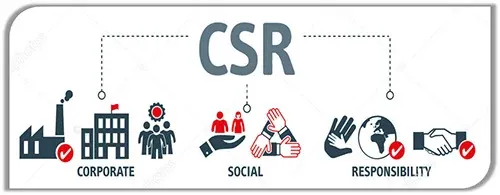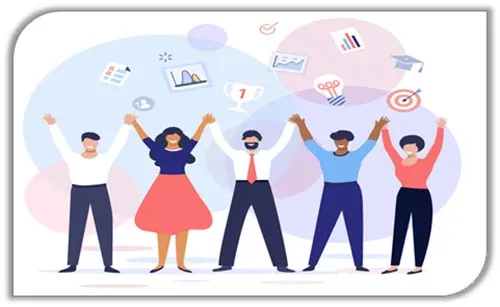
Menu

Menu

With the onslaught of COVID-19 and its resulting impact on businesses and individuals alike, creating a positive work environment has become increasingly challenging yet critical to organizational success. In fact, organizations that develop and maintain a culture of positivity in the workplace serve as examples and motivation for others, demonstrating that employee well-being is essential for sustained performance.
One organization that has succeeded in living up to its motto, “People’s Happiness is Our Goal,” is the General Directorate of Residency and Foreigners Affairs (GDRFA) in Dubai. This organization understands that empowering and supporting employees is fundamental to achieving strategic goals. By prioritizing employee happiness, GDRFA sets a benchmark for others to follow, showcasing the tangible benefits of fostering a positive workplace culture.

This department is reputed to be the first of its kind in the UAE and the region. It actively promotes methods aimed at increasing positive thinking among the Directorate’s employees, thereby empowering them to create a happy and highly productive working environment. Furthermore, the department opens avenues for employees to achieve their personal aspirations, as it also focuses on various factors that significantly affect employee satisfaction.
By prioritizing both professional development and personal growth, this initiative not only enhances workplace morale but also fosters a sense of fulfillment among employees. Consequently, such an approach contributes to a more engaged and motivated workforce, ultimately leading to improved organizational performance.

Understanding the importance of recognition and reward in creating a positive culture, the organization launched a formal initiative aimed at acknowledging employees who demonstrated immense positive energy. Specifically, this program recognizes those who consistently meet work deadlines, uphold strong work ethics, and take creative initiatives that contribute to high productivity.
By highlighting these behaviors, the initiative not only boosts morale but also fosters a culture where excellence is celebrated. Consequently, this recognition serves as a motivating force, encouraging all employees to strive for their best and contribute positively to the organization’s success.

GDRFA hosts a series of lectures focused on the effectiveness of positive energy, which is an integral part of their commitment to leadership excellence. During these sessions, they emphasize the importance of building strong relationships and effective communication within the workplace.
Furthermore, the lectures highlight the significance of fostering positive and close working relationships among employees. By cultivating an environment where positive energy is valued, GDRFA not only enhances teamwork but also improves overall job satisfaction. As a result, employees are more likely to feel engaged and motivated, ultimately contributing to the organization’s success.

A dedicated Hawa’a committee works diligently to provide women with the optimal environment necessary for achieving high performance at work. Moreover, this committee emphasizes the importance of balancing professional responsibilities with family commitments.
In addition to supporting women, GDRFA actively recruits individuals of determination, ensuring that the workplace meets their unique needs. By fostering an inclusive environment, GDRFA empowers these employees to perform to the best of their abilities. This dual approach not only enhances workplace diversity but also promotes a culture of respect and support, ultimately contributing to the organization’s overall success.

A dedicated learning and development team ensures the provision of quality training and development opportunities at all levels, effectively leveraging the strengths of their employee base. This commitment to growth is not only beneficial for current employees but also for future talent.
Through the Raeyaa program, GDRFA takes proactive steps to create a pipeline for future recruitment by selecting high-potential students at the school level. Furthermore, the organization provides these students with comprehensive support, including education and training throughout their college years, as well as specialized training opportunities. By investing in the development of young talent, GDRFA not only cultivates a skilled workforce but also fosters loyalty and engagement among employees, ultimately contributing to the organization’s long-term success.

GDRFA is keenly aware of its duties to the community in which it exists, actively seeking ways to make a positive impact. As part of this commitment, the organization has initiated numerous initiatives, ranging from spreading cultural awareness to providing potable water to communities around the world.
Moreover, these initiatives are often spearheaded by groups of dedicated employees who volunteer their time and efforts. This not only fosters a sense of purpose and camaraderie among staff but also reinforces the organization’s values of compassion and responsibility. By engaging in community service, GDRFA not only enhances its corporate social responsibility but also strengthens its connection with the community, ultimately creating a more inclusive and supportive environment for all.
GDRFA takes employee well-being seriously by providing various benefits that enhance their work-life balance and overall satisfaction. One of the standout offerings is the “Alsaada” card, which grants employees and their families access to a wide range of benefits and services at discounted rates throughout Dubai. This card not only helps employees save money but also encourages them to explore the local community and engage in leisure activities, further enriching their personal lives.
In addition to tangible benefits, GDRFA also prioritizes creating a joyful work atmosphere through regular happiness initiatives. These initiatives often include fun competitions and rewards designed to motivate employees and inject a sense of enjoyment into the workplace. By fostering a culture of positivity and engagement, GDRFA not only boosts morale but also enhances overall productivity, demonstrating that a happy workforce is a key driver of organizational success.

In summary, there is a growing acknowledgment of the profound impact that positivity has on organizational success. Not only do positive workplaces enhance performance, but they are also essential for attracting and retaining top talent. Today’s employees increasingly seek out organizations that cultivate a positive culture, prioritize emotional well-being, and empower them to make meaningful contributions.
By fostering an environment that values recognition, support, and personal growth—much like the initiatives implemented by GDRFA—organizations can create a thriving workplace where employees feel motivated and engaged. Ultimately, investing in positivity is not merely a trend but a strategic approach that paves the way for long-term success and sustainability in an ever-evolving business landscape.
Human resource professionals are essential in creating positive work environments. They assess workplace positivity through surveys and feedback, identifying areas for improvement.
Additionally, HR trains leaders on the benefits of positivity, enabling them to foster supportive atmospheres that enhance engagement and productivity. HR also provides managers with tools like strengths assessments to help employees recognize and leverage their talents, ensuring a better fit for roles.
Moreover, HR facilitates development opportunities, mentoring, and wellness programs, empowering employees to grow and prioritize their well-being.
In summary, HR professionals drive a positive workplace culture, enhancing employee morale and organizational performance.
To enhance workplace positivity, fostering a culture of collaboration is essential. By encouraging teamwork and open communication, organizations create an environment where employees feel valued and included. Furthermore, collaborative efforts can lead to innovative solutions, as diverse perspectives come together to tackle challenges. Regular team-building activities, whether virtual or in-person, help strengthen relationships among employees, making it easier for them to support one another. In this way, organizations can cultivate a sense of belonging that contributes to overall job satisfaction.
Another critical initiative is encouraging feedback and continuous improvement. Organizations should create channels for employees to voice their opinions and suggestions openly. By actively soliciting feedback, leaders demonstrate that they value employee input, which, in turn, fosters trust and transparency. Moreover, when employees see their suggestions implemented, it boosts their morale and engagement. Continuous improvement initiatives should be regularly evaluated and refined to ensure they align with evolving employee needs and organizational goals.
Prioritizing mental health and well-being is crucial in promoting positivity within the workplace. Organizations can implement wellness programs that focus on stress management, work-life balance, and mental health resources. Additionally, creating a supportive environment where employees feel comfortable discussing mental health challenges is vital. By offering workshops, seminars, and access to professional counseling, organizations show their commitment to employee well-being. This focus not only enhances overall workplace morale but also leads to increased productivity and lower absenteeism rates.
Finally, celebrating achievements and milestones can significantly impact workplace positivity. Recognizing individual and team accomplishments helps employees feel appreciated and motivated to perform at their best. Organizations should regularly acknowledge both small wins and major achievements through ceremonies, shout-outs in meetings, or dedicated communication channels. By celebrating successes, organizations reinforce a culture of positivity and encourage employees to strive for excellence. Ultimately, this practice strengthens team cohesion and fosters a shared sense of purpose among employees.
Investing in leadership development is, furthermore, a vital strategy for fostering a positive work environment. By equipping leaders with the skills to inspire and motivate their teams, organizations can create a ripple effect that enhances overall workplace culture. Notably, training programs that focus on emotional intelligence, effective communication, and conflict resolution empower leaders to navigate challenges while maintaining team morale. Additionally, when leaders demonstrate a commitment to their employees’ growth and well-being, it builds trust and encourages a supportive atmosphere. As a result, employees are more likely to feel engaged and committed to their work, ultimately benefiting the organization as a whole.
Integrating diversity, equity, and inclusion (DEI) initiatives into the workplace is crucial for fostering positivity and innovation. By creating a diverse workforce, organizations can tap into a wealth of perspectives and ideas that can drive creativity and problem-solving. Moreover, promoting equity ensures that all employees have equal access to opportunities for growth and advancement. To effectively implement DEI initiatives, organizations should prioritize open dialogues about diversity and regularly assess their progress. Consequently, by doing so, they create a culture where everyone feels respected and valued, ultimately leading to higher levels of employee satisfaction and retention. In this inclusive environment, employees are empowered to bring their authentic selves to work, which, in turn, contributes to a more vibrant and dynamic organizational culture.
Enhancing communication channels within an organization is, additionally, essential for cultivating a positive work environment. By establishing clear and open lines of communication, employees are more likely to feel informed and engaged in their roles. Furthermore, regular check-ins and feedback sessions can foster transparency, allowing team members to voice their concerns and share their ideas. This two-way communication not only strengthens relationships among colleagues but also helps identify potential issues before they escalate. Moreover, implementing collaboration tools and platforms can facilitate real-time communication, thereby improving teamwork and project efficiency. Ultimately, when employees feel heard and valued, they are more motivated to contribute to the organization’s success.
Fostering a culture of recognition is, moreover, a powerful way to boost employee morale and satisfaction. By regularly acknowledging employees’ contributions and celebrating their achievements, organizations create an environment where individuals feel appreciated and motivated. Additionally, implementing recognition programs, such as “Employee of the Month” or peer-to-peer recognition systems, can encourage a spirit of camaraderie and support among team members. Furthermore, recognizing both small and large accomplishments helps reinforce positive behaviors and outcomes, promoting a cycle of success. As a result, when employees feel valued for their hard work, they are more likely to stay engaged, ultimately leading to higher retention rates and a more vibrant workplace culture.
Encouraging employee wellness is, additionally, crucial for maintaining a positive work environment and ensuring long-term success. By implementing wellness programs that promote physical and mental health, organizations demonstrate their commitment to the well-being of their employees. Furthermore, offering resources such as fitness classes, mental health days, or access to counseling services can significantly enhance employees’ overall quality of life. Additionally, creating a culture that prioritizes work-life balance encourages employees to take necessary breaks and recharge, ultimately leading to increased productivity and job satisfaction. When employees feel supported in their wellness journeys, they are more likely to thrive in their roles, contributing to a more positive and dynamic workplace atmosphere.
Find out how HRBluSky can support you to ensure that both you and your employees benefit from a positive employee experience.
Alignment
Article
Audit
Automation
Benefits
Candidate
Communication
Compliance
Digitalisation
Digital Technology
Diversity
Emirates Id Application
Employee Experience
ESS
Feedback
Health and Safety
HRMS
HR Strategy
HR System UAE
Human Resource Management
Human Resource Management Systems
Job Roles
Learning and Development
Onboarding
Outsource
Payroll
Payroll Management System
Payroll Processing
Performance
Performance Management
Personalisation
Recruit
Recruiting
Recruitment
Remote Working
Rewards
Security
Service Providers
Skills
Smart
Survey
Virtual
Visa Cancellation
Work Environment
Workforce
© 2025 Pruvity HR Solutions Pvt Ltd, Madurai, India
WhatsApp us